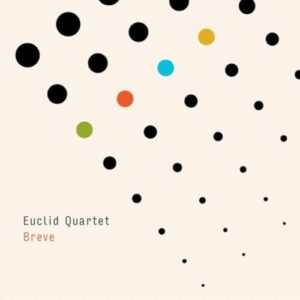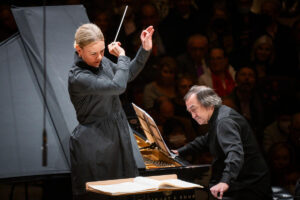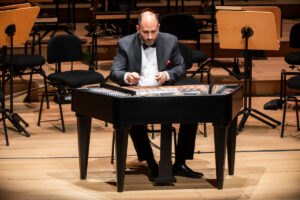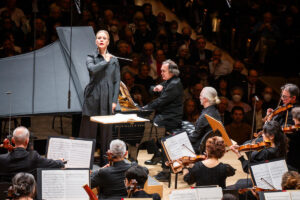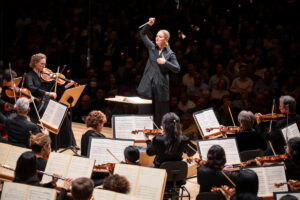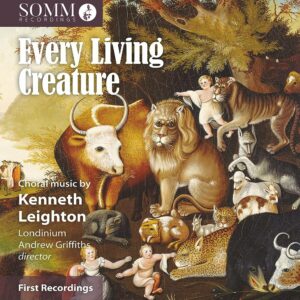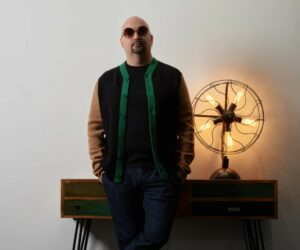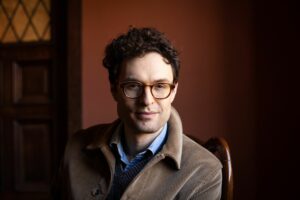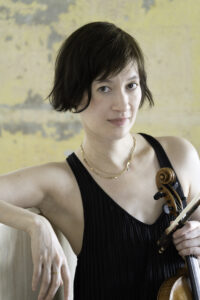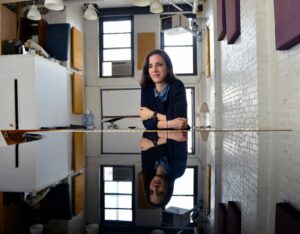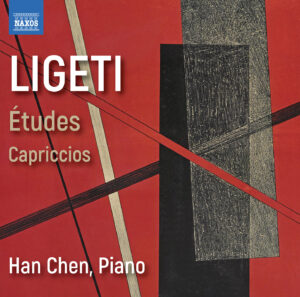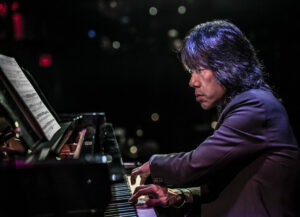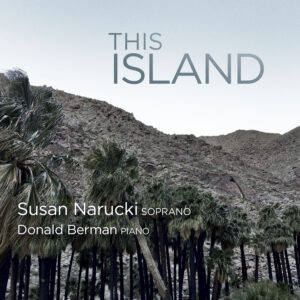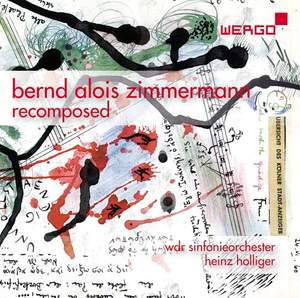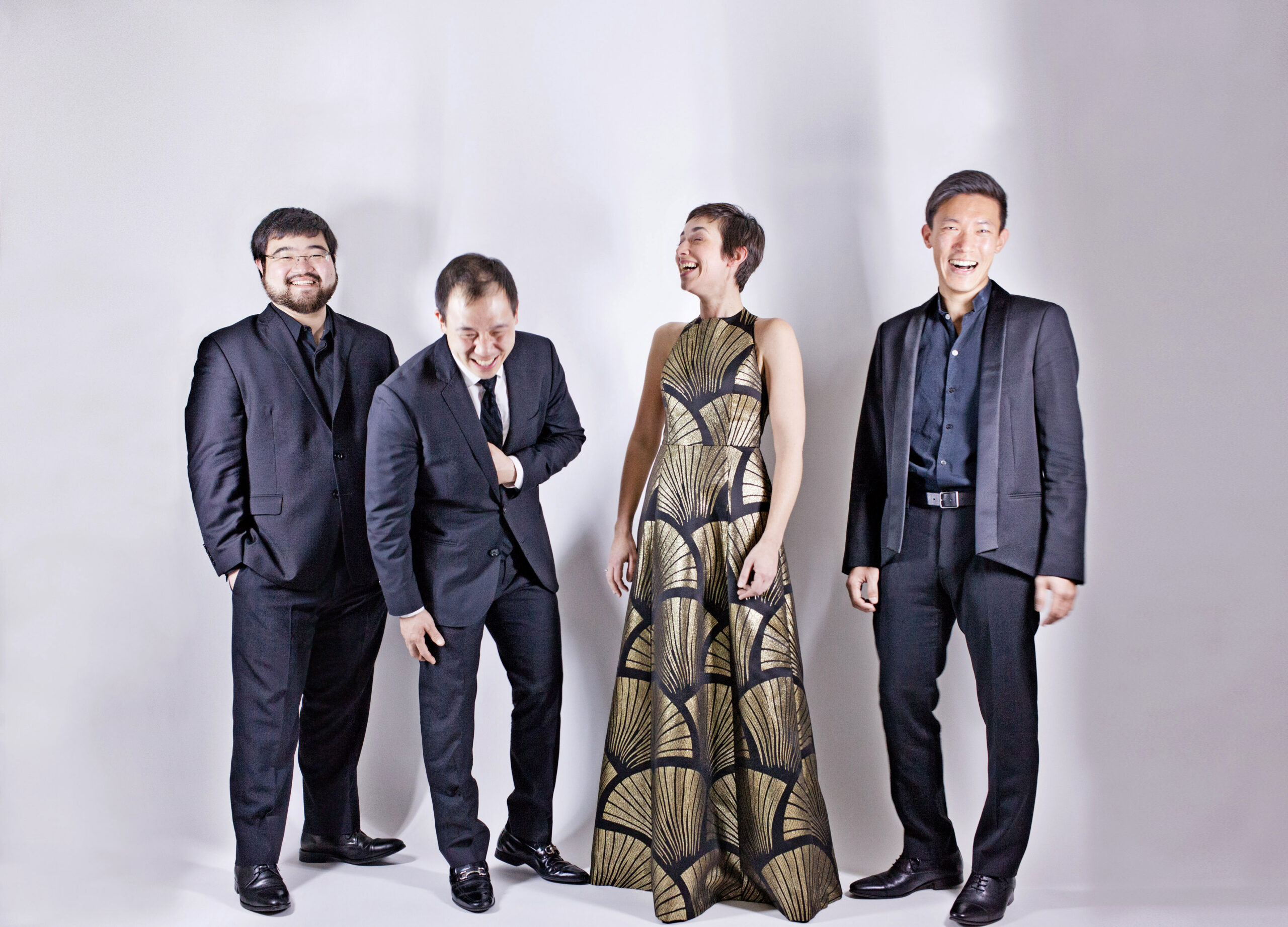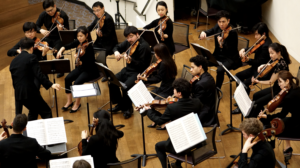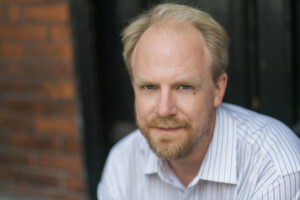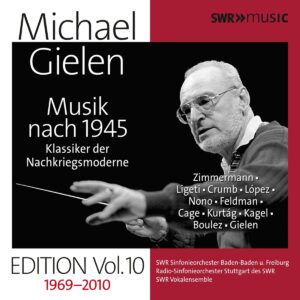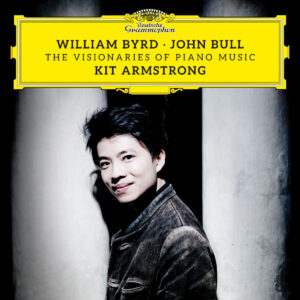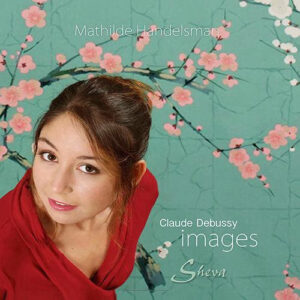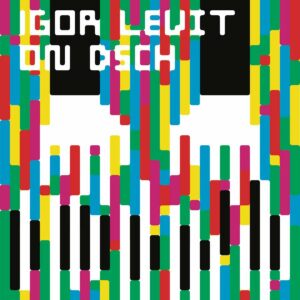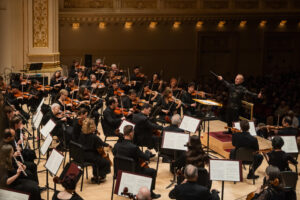
The Metropolitan Opera Orchestra, Yannick Nézet-Séguin, Music Director
Carnegie Hall
June 14, 2024
By Christian Carey for Sequenza 21
NEW YORK – In their last concert appearance this season at Carnegie Hall, the Metropolitan Opera Orchestra, conducted by their Music Director, Yannick Nézet-Séguin, presented a program of music from two early twentieth century operas that both explore French folktales alongside one of the most famous nineteenth century opera overtures, based on a legend first promulgated by mariners in the eighteenth century.
The latter, Richard Wagner’s Overture to the Flying Dutchman (1843), opened the concert. It has a memorable and bellicose main theme, one that particularly will delight brass fans. Aside from a couple of phlegmatic entrances at the very beginning, the Met’s brass section played admirably, with brilliant, powerful tone and incisive rhythm. Nézet-Séguin’s interpretation emphasized a strong and questing demeanor. The accentuation of leitmotifs associated with the ship’s captain and the sea’s rollicking waves suggested a character ready to break free from the curse inflicted upon him.
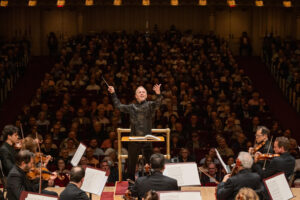
Claude Debussy’s opera Pélleas et Mélisande (1902) is one of the composer’s crowning achievements. He never made a suite from the opera, and conductor Eric Leinsdorf decided to craft one, assembling a bit more than twenty minutes of its instrumental music. The piece received its Carnegie Hall premiere at the concert.
Keeping with the Dutchman’s aquatic theme, Leinsdorf’s selections from Pélleas et Mélisande often involve water inspired passages, including music from the incomparable grotto scene. The music is frequently subdued, primarily operating in a dynamic spectrum between pianissimo and piano. There is forte music in Pélleas, but much of it involves the vocalists, particularly the role of Golaud and the penultimate scene that goes from love to murder. Thus, apart from a few portentous passages, Leinsdorf crafted a suite with more than a passing resemblance to the composer’s tone poem La Mer (1905). The Met orchestra played exceedingly beautifully, with a luminous sound that seamlessly blended winds and strings. Nézet-Séguin gave the piece a detailed and delicate reading, with well-paced phrasing providing continued vitality in a work that, in the wrong hands, could be treated to an overly sentimental and languid rendition.
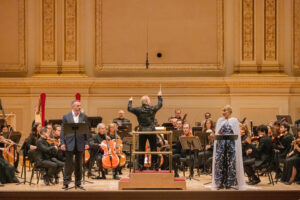
The Met’s orchestra concerts usually feature at least one piece for vocalists. Concluding the evening was an unstaged one-act opera, Bluebeard’s Castle (1918) by Béla Bartók. Even by the standards of early modernist opera, the story is exceedingly morbid (“creeptacular,” opined a concertgoer near my seat). Bluebeard brings Judith, his latest wife, to his castle. She is both fearful of his reputation and smitten with him. There are seven doors in the home, which include a torture chamber, armory, treasury, garden, et al. Judith is insistent that all of the doors be opened, that light be let into the gloomy castle. Behind the last door is a room that contains three of Bluebeard’s previous wives, all murdered. He describes this room as “a space on the border of life and death.” Judith is sent to join the other wives, never to depart.
Why Judith doesn’t run the other direction when she sees the bloody implements in the torture chamber behind door one I’ll never know, but the progression from door to door isn’t just a realistic depiction of a castle. Maeterlinck was an important Symbolist writer, and the play and, by extension, the libretto for Bluebeard’s Castle, is rife with archetypal imagery. Bartók leaned into this understanding of the story, creating music that clearly delineates both of the characters and the progression through a castle that is equal parts nightmare dwelling and the inner life of Bluebeard.
Mezzo-soprano Elina Garanča played Judith and Christian Van Horn took the role of Bluebeard. Garanča’s voice is a high, lyric mezzo, which served the challenging tessitura of the role well. In addition, she embodied the character’s mixture of feelings with eloquent expression, affording Judith successively greater curiosity and dread as more is revealed. Van Horn has a darkly sonorous instrument which he used to diabolical effect. The contrast between the two characters, one vulnerable and the other villainous, was well interpreted, Garanča singing with excitement and insistence, Van Horn sepulchrally forceful. Not for the faint of heart, but as Bartók’s only opera, it makes one yearn for him to have composed more for the stage.
There is an interesting connection between Pélleas et Mélisande and Bluebeard’s Castle. Maeterlinck, whose plays were the basis of their librettos, depicts Mélisande as a wife who escaped Bluebeard’s predations. Perhaps this explains her dissociative and even perplexing behavior in the opera.
The concert’s program contained vivid contrasts as well as intriguing commonalities. The orchestra and Nézet-Séguin proved as compelling in concert as they are in the pit.
